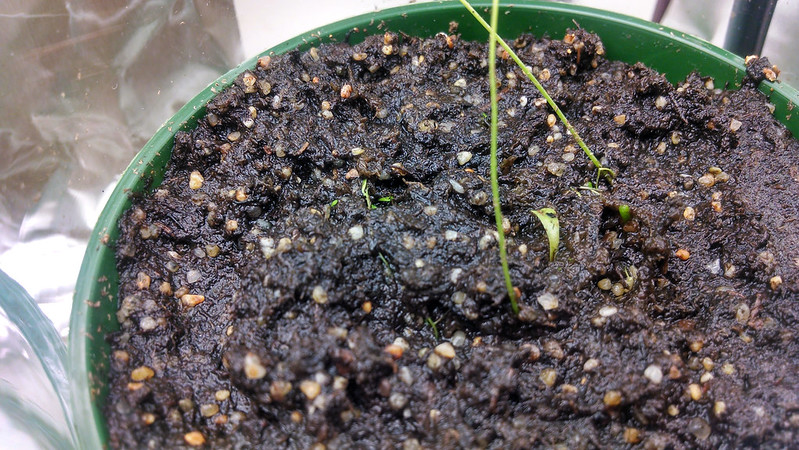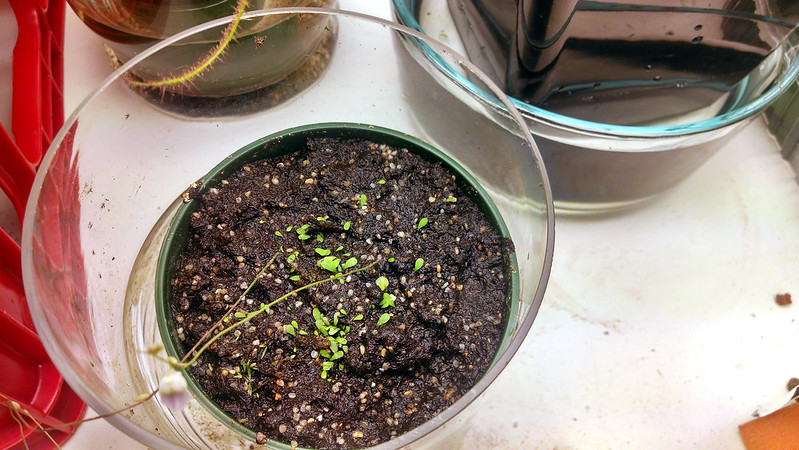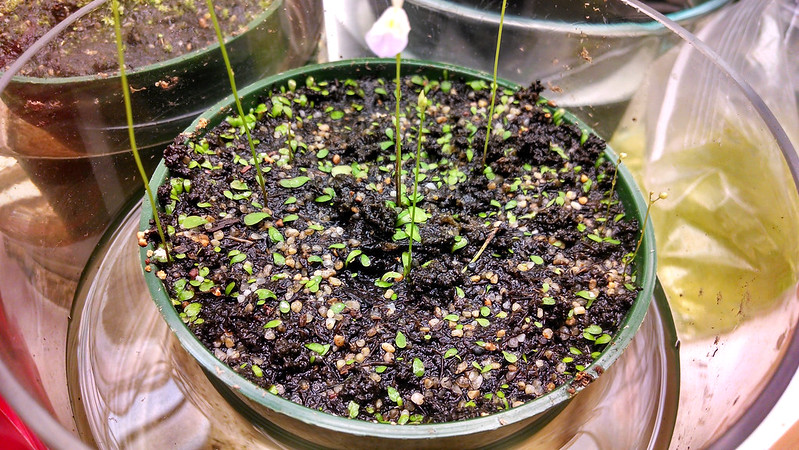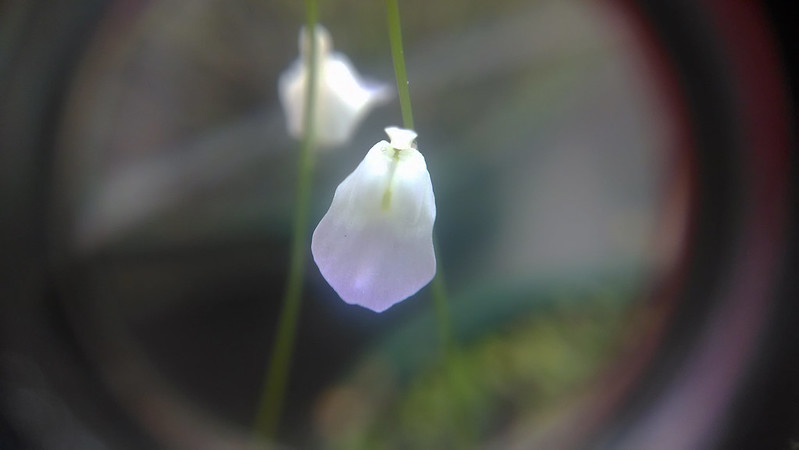This
is part of a series of posts describing my experiences with different
species, their culture requirements, and photos of their growth in my
collection. The full series can be read here, or by species at the Series page
Utricularia livida is a perfect example of an easy, delightful plant.
 |
| U. livida blooms, looking adorable on 6-9-2014. |
I've had my
U. livida for about 3 months, when I bought a little plug from
Natch Greyes' Carnivorous Plants. Natch reads the blog, and I think he'll be pleased to hear that he sent along an excellent little plant – it's been growing like gangbusters and the blooms are just as adorable as I could hope.
 |
| First new growth once I received the plant, 3-12-2014. |
U. livida is a terrestrial Utricularia, and is also widely held to be
a weed (though a charming one). For this reason it lives in its own little glass tray/container, with the pot sitting inside. This way I can keep it out of my sundews and other Utricularia, and give it free reign to delight me with little sprays of flowers and cute foliage.
 |
| A month of growth, 4-11-2014. |
 |
| A taste of things to come, 4-11-2014. |
It's also extremely, extremely easy to care for. I have it
under my lights, but I'm sure it would grow just fine on a windowsill
(my windowsills are just too narrow for plants, which is too bad). The
soil is the standard carnivore peat and sand, and the water is
distilled. While I got a couple flowers out of one of the old stalks it
had been shipped with, the plant waited to make new flower stalks for
about 6 weeks, during which time it focused on spreading throughout the
pot.
 |
| My first new flower stalks, 4-30-2014. |
One trick I read somewhere for terrestrial Utricularia is to
periodically saturate the media to sort of simulate a fluctuating water
level in a bog. What I do is let the water level drop to about an inch
from the bottom of the pot, and then fill it back up to right level with
the top of the media. It'll be really soggy for several days after
that, and the plants seem to spread nicely afterward. My
Utricularia sandersonii and
Utricularia calcyfida also get this treatment, and respond well.
 |
| U. livida blooming for real now, 4-29-2014. |
Of course, the flowers are the thing when it comes to Utricularia (for the most part). I'm not sure what caused my patch to start flowering – I've heard that different clones behave differently (this one is awesome). It gets a constant photoperiod and hasn't been around long enough to know any seasons here, so it's anyone's guess. I suspect that if you get some
U. livida, give it decent light, and flood it periodically, you'll be rewarded with lots of adorable little blooms. I certainly have. Every carnivore grower should consider adding this cute little guy to their collection.
 |
| The flowers are so cute up close. 6-9-2014. |
The Breakdown
- media: Peat and sand or pure peat work fine.
- light: Doesn't need quite as much as a sundew. Great windowsill plant, or good placed a bit farther from the lights than the rest of the collection.
- water: U. livida likes it wet. Keep it in a tray and flood it periodically if possible.
- temperature: It probably shouldn't be allowed to freeze.
- feeding: I've heard that terrestrial Utricularia can benefit from foliar feeding with something like MaxSea, but I have no experience in this. I've considered seeding my pot with some pond water to introduce little microorganisms but the plants haven't seemed to need it yet.
- propagation: Once you grow a colony you can dig out patches of it and seed new pots. I've heard that Utricularia like to always be colonizing fresh media, so it might be a good idea to divide your Utrics periodically.







I'm glad that your plants are doing well! Good to see that clone is flowering profusely for you, too. -N
ReplyDeleteIt's a beauty, that's for sure.
Deletebeautiful plant
ReplyDelete